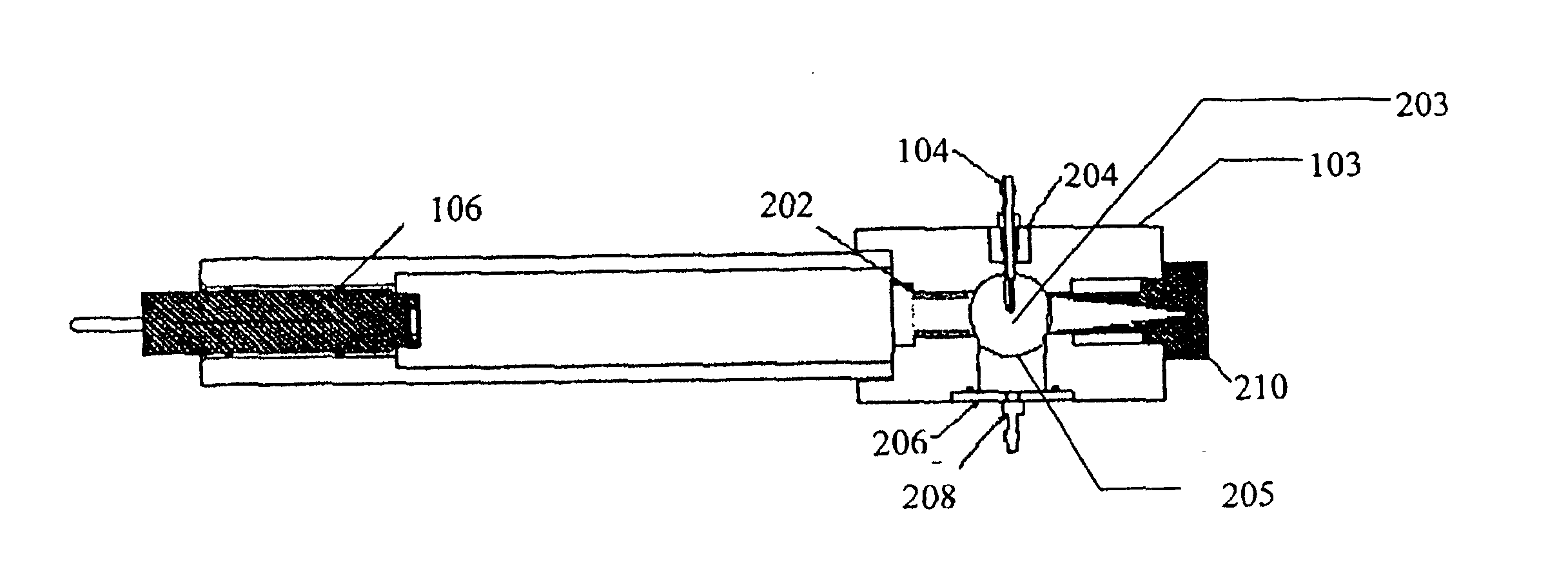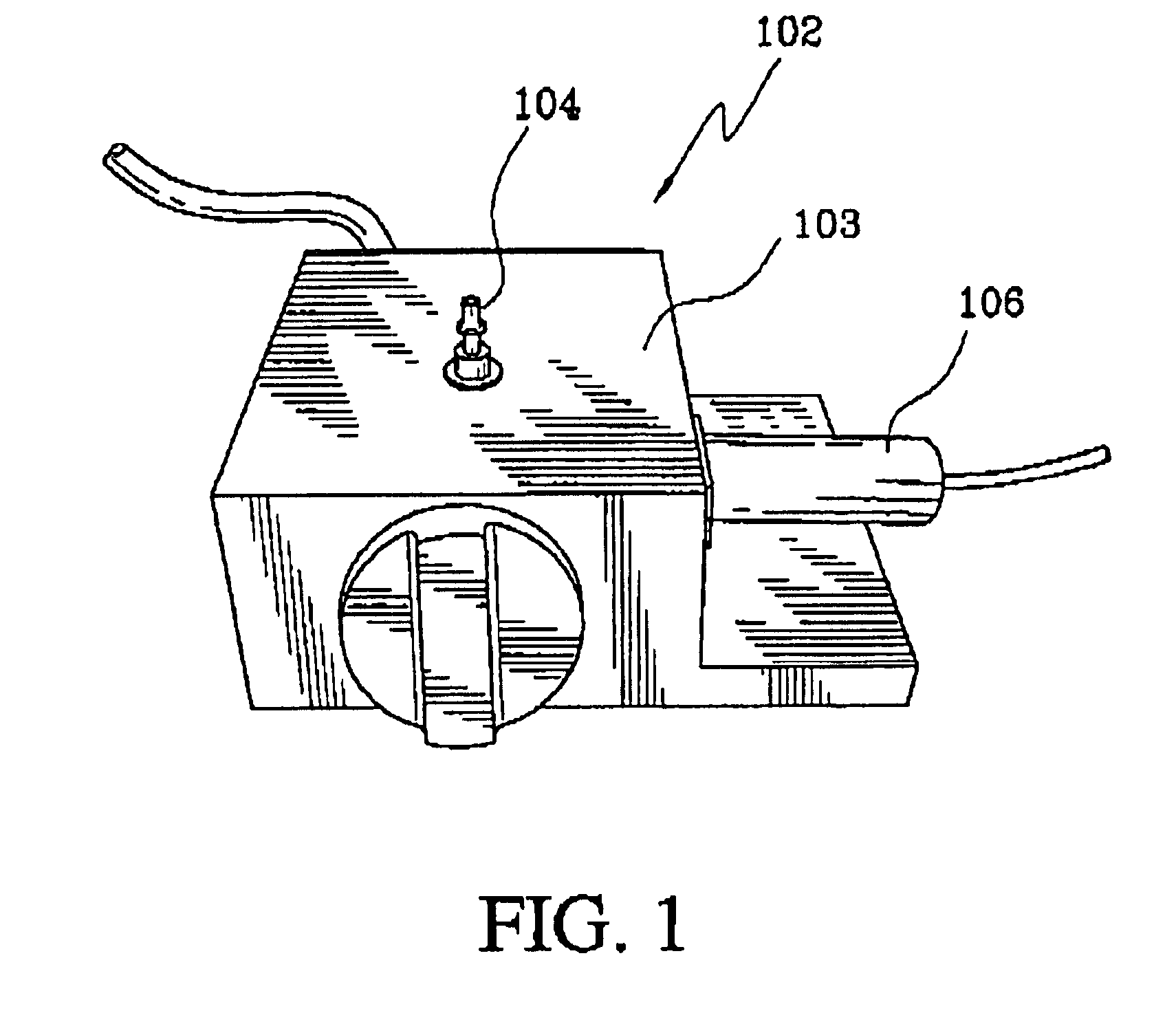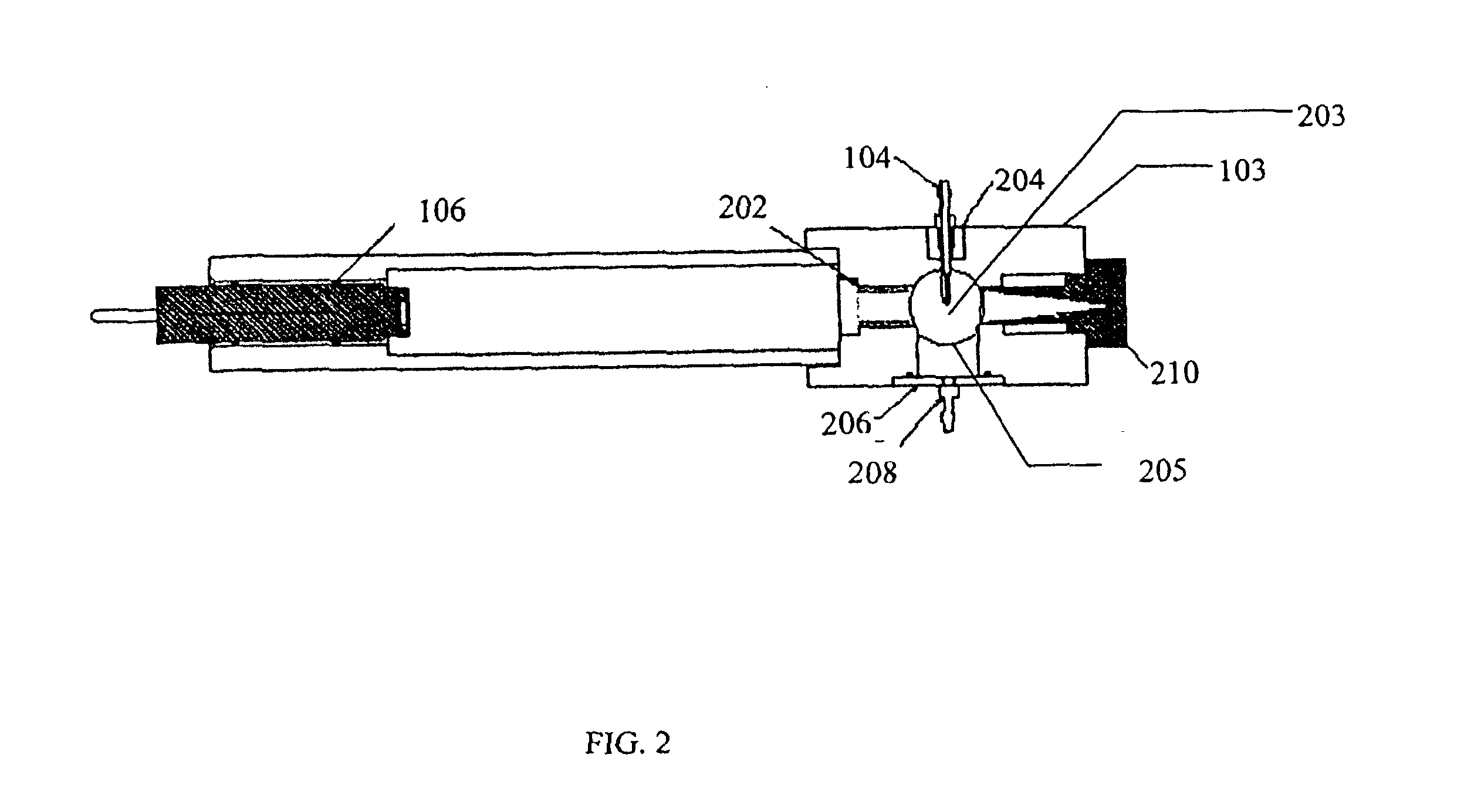System and method for detecting and classifying biological particles
a biological particle and biological particle technology, applied in the field of instruments and methods for analyzing airborne biological particles, can solve the problems of increasing the probability of not detecting a certain percentage of biological particles at elevated aerosol concentrations, causing death, and causing death, and causing death
- Summary
- Abstract
- Description
- Claims
- Application Information
AI Technical Summary
Benefits of technology
Problems solved by technology
Method used
Image
Examples
Embodiment Construction
[0043]The present invention provides real-time detection of the presence of biological particles that are sampled from the air in a real-time manner. Preferably, the detection process of the present invention comprises two primary components. The first component includes collecting the aerosol containing airborne particles, introducing the collected aerosol into a laser's viewing region and collecting the amount of generated light. The second component of the detection process includes analysis of the signals collected from a sensor.
[0044]The sensor comprises four primary components. An aerosol inlet probe is used to analytically introduce the aerosol to a laser's viewing volume. An aerosol outlet probe is preferably configured to remove the aerosol that exits from the laser's view volume to minimize fouling of the optic region of the sensor itself. An illumination source that comprises either a continuous wave laser or a modulated laser with a repetition frequency that exceeds 50 M...
PUM
| Property | Measurement | Unit |
|---|---|---|
| repetition frequency | aaaaa | aaaaa |
| wavelength | aaaaa | aaaaa |
| fluorescing wavelength | aaaaa | aaaaa |
Abstract
Description
Claims
Application Information
 Login to View More
Login to View More - R&D
- Intellectual Property
- Life Sciences
- Materials
- Tech Scout
- Unparalleled Data Quality
- Higher Quality Content
- 60% Fewer Hallucinations
Browse by: Latest US Patents, China's latest patents, Technical Efficacy Thesaurus, Application Domain, Technology Topic, Popular Technical Reports.
© 2025 PatSnap. All rights reserved.Legal|Privacy policy|Modern Slavery Act Transparency Statement|Sitemap|About US| Contact US: help@patsnap.com



